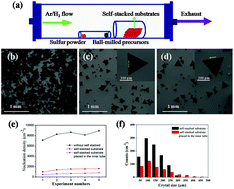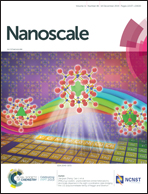An approach to high-throughput growth of submillimeter transition metal dichalcogenide single crystals†
Abstract
High-throughput growth of large size transition metal dichalcogenide (TMD) single crystals is an important challenge for their applications in the next generation electronic and optoelectronic integration devices. Here we report the high-throughput growth of submillimeter monolayer TMD single crystals by two-stage space confined chemical vapor deposition, where the nucleation density of TMD crystals is significantly decreased for the growth of large size monolayer crystals by the space confinement effect. Moreover, high-throughput growth of submillimeter TMD crystals is also achieved by stacking the substrates along the perpendicular direction to the flow of the reaction gases. The mobilities of the TMD materials produced in this way are up to 1.2, 17.0 and 25.0 cm2 (V s)−1 for monolayer WS2, WSe2 and MoS2 single crystals, respectively. The results demonstrate that two-stage space confined growth is a highly promising method for high-throughput fabrication of high-quality submillimeter monolayer TMD single crystals, which will pave a new pathway to large-scale production of TMD-based electronic and optoelectronic devices.



 Please wait while we load your content...
Please wait while we load your content...